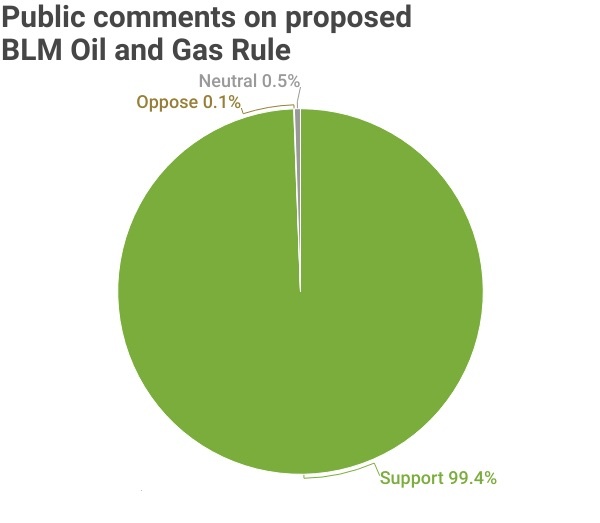A new statistical analysis of more than 260,000 public comments finds universal support for the Bureau of Land Management’s proposed rule updating the regulations that govern oil and gas leasing on American public lands.
The Center for Western Priorities performed a sentiment analysis on a random sample of 10,000 public comments submitted to regulations.gov as of Monday, September 25, after the close of a 60-day comment period. Of the 261,000 comments submitted to the website, more than 130,000 were available for download.
CWP’s analysis found more than 99 percent of the comments encouraged the Interior Department to adopt the Oil and Gas Rule largely as written. Another one half of one percent of the comments were neutral on the details of the rule, generally requesting that BLM end all oil and gas drilling or take other actions outside the scope of the proposed rule. Just one tenth of one percent of the public comments encouraged BLM to withdraw or significantly weaken the proposed rule.
The overwhelming response to the BLM’s common-sense reforms shows a level of consensus that’s unprecedented for a federal rulemaking. Finding any opposition in the public comments is like looking for a needle in a haystack.
The analysis used a combination of automated and manual classification of comments to categorize them as primarily “supportive,” “opposed,” or “neutral” to the proposed rule. The full set of analyzed comments and the code used for the sentiment analysis are available online.
In addition to the formal public comment period, the BLM held a series of virtual and in-person information sessions to explain the proposed rule, which would bring BLM’s regulations into compliance with the Inflation Reduction Act’s overhaul of the leasing, rental, and royalty rates oil and gas companies pay to extract oil and gas owned by the American people. The rule would also update requirements for the bonds that companies must post in order to ensure they clean up after themselves.
With the comment period closed, the BLM will now review and respond to technical comments on the proposed rule. A final rule is expected to be published in the winter or spring of 2024.

